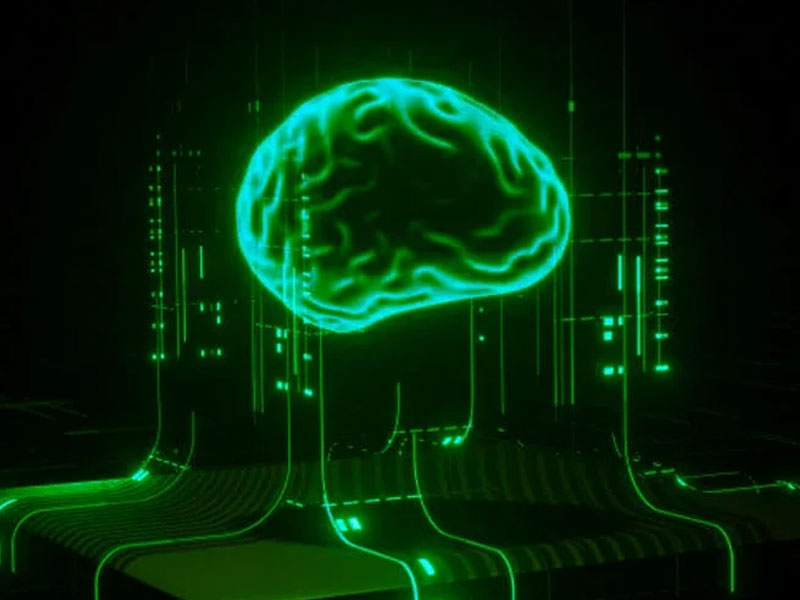AI Is Set To Change Fertility Treatment Forever
SOURCE: HTTPS://CODEBLUE.GALENCENTRE.ORG/
NOV 06, 2023
Evolution of modelops: now a more advanced artificial intelligence
SOURCE: ANALYTICSINSIGHT.NET
OCT 13, 2021

ModelOps is a set of automated practices and tools that help deploy, manage, monitor, and improve models in production. The approach is designed to be model-centric, which means everything is instrumented around the model, from deployment to governance to inference and monitoring to scale.
Far and wide, investment in artificial intelligence and machine learning are drastically increasing and new data science projects are underway to build predictive and analytical models for various purposes. However, while companies plan to scale up sophisticated Artificial Intelligence solutions in a reasonable time, the harsh reality is that the adoption of these solutions is often stalled because companies generally focus more on development than on the operationalization of the models. On that note, ModelOps comes to the rescue bringing advancements in AI.
Since the ModelOps approach brings all the players together, several emerging start-ups, as well as enterprise companies, offer ModelOps solutions to orchestrate these components collectively in an end-to-end fully automated model life cycle. Let us have a look at the figure below showing how by managing a platform enterprises can govern and scale any AI initiatives.
Powerful platforms like ModelOp center typically integrate with development platforms, IT systems, and enterprise applications so that businesses can leverage and extend ongoing investments in AI and IT. In this way, data scientists can work at scale using the tools they know best.
AI answers Distress and Help-calls
Emergency relief services are flooded with distress and help calls in the event of any emergency. Managing such a huge number of calls is time-consuming and expensive when done manually. The chances of critical information being lost or unobserved are also a possibility. In such cases, AI can work as a 24/7 dispatcher. AI systems and voice assistants can analyze massive amounts of calls, determine what type of incident occurred and verify the location. They can not only interact with callers naturally and process those calls, but can also instantly transcribe and translate languages. AI systems can analyze the tone of voice for urgency, filtering redundant or less urgent calls and prioritizing them based on the emergency.
Machine learning and other data science approaches are not limited to assisting the on-ground relief teams or assisting only after the actual emergency. Machine learning approaches such as predictive analytics can also analyze past events to identify and extract patterns and populations vulnerable to natural calamities. A large number of supervised and unsupervised learning approaches are used to identify at-risk areas and improve predictions of future events. For instance, clustering algorithms can classify disaster data based on severity. They can identify and segregate climatic patterns which may cause local storms with the cloud conditions which may lead to a widespread cyclone.
Predictive machine learning models can also help officials distribute supplies to where people are going, rather than where they were by analyzing real-time behavior and movement of people.
In addition, predictive analytics techniques can also provide insight for understanding the economic and human impact of natural calamities. Artificial neural networks take in information such as region, country, and natural disaster type to predict the potential monetary impact of natural disasters.
Recent advances in cloud technologies and numerous open-source tools have enabled predictive analytics with almost no initial infrastructure investment. So agencies with limited resources can also build systems based on data science and develop more sophisticated models to analyze disasters.
As with every progressing technology, AI will also build on its existing capabilities. It has the potential to eliminate outages before they are detected and give disaster response leaders an informed, clearer picture of the disaster area, ultimately saving lives.
LATEST NEWS
Augmented Reality
Hi-tech smart glasses connecting rural and remote aged care residents to clinicians
NOV 20, 2023
WHAT'S TRENDING


Data Science
5 Imaginative Data Science Projects That Can Make Your Portfolio Stand Out
OCT 05, 2022

SOURCE: HTTPS://CODEBLUE.GALENCENTRE.ORG/
NOV 06, 2023
SOURCE: HTTPS://WWW.NEWS-MEDICAL.NET/
NOV 06, 2023
SOURCE: HTTPS://WWW.WIRED.COM/
NOV 05, 2023
SOURCE: HTTPS://WWW.BUSINESSOUTREACH.IN/
OCT 31, 2023
SOURCE: HTTPS://WWW.DIGITALMUSICNEWS.COM/
SEP 13, 2023
SOURCE: HTTPS://PULSE2.COM/
AUG 27, 2023
SOURCE: HTTPS://TECHCRUNCH.COM/
AUG 18, 2023